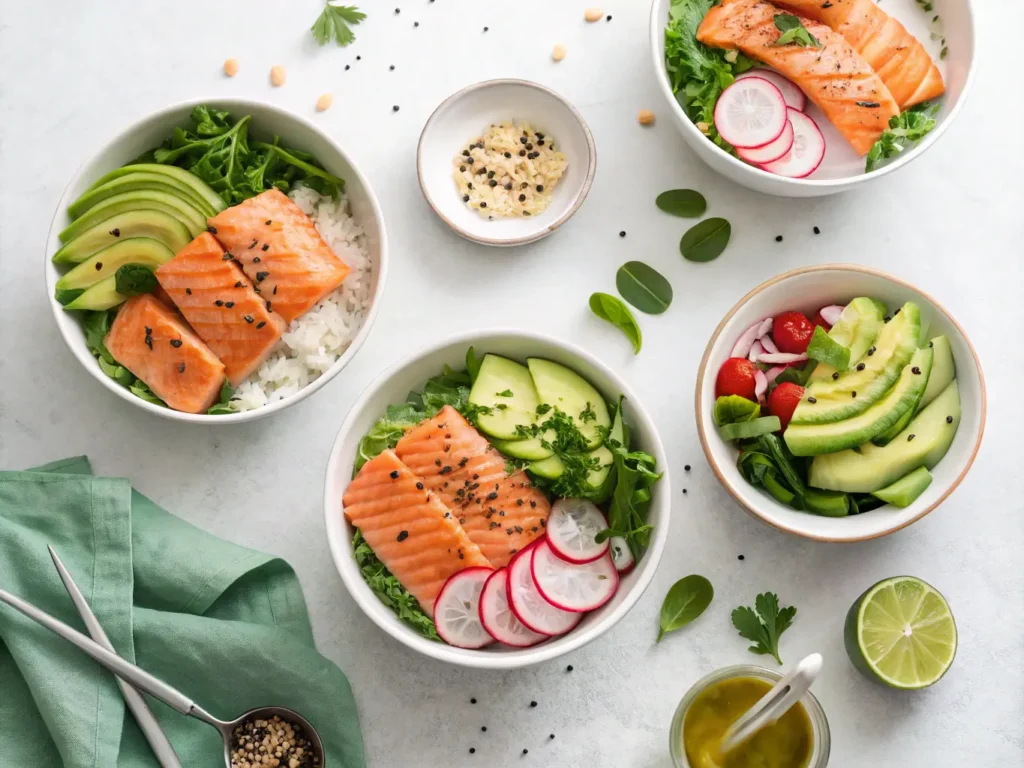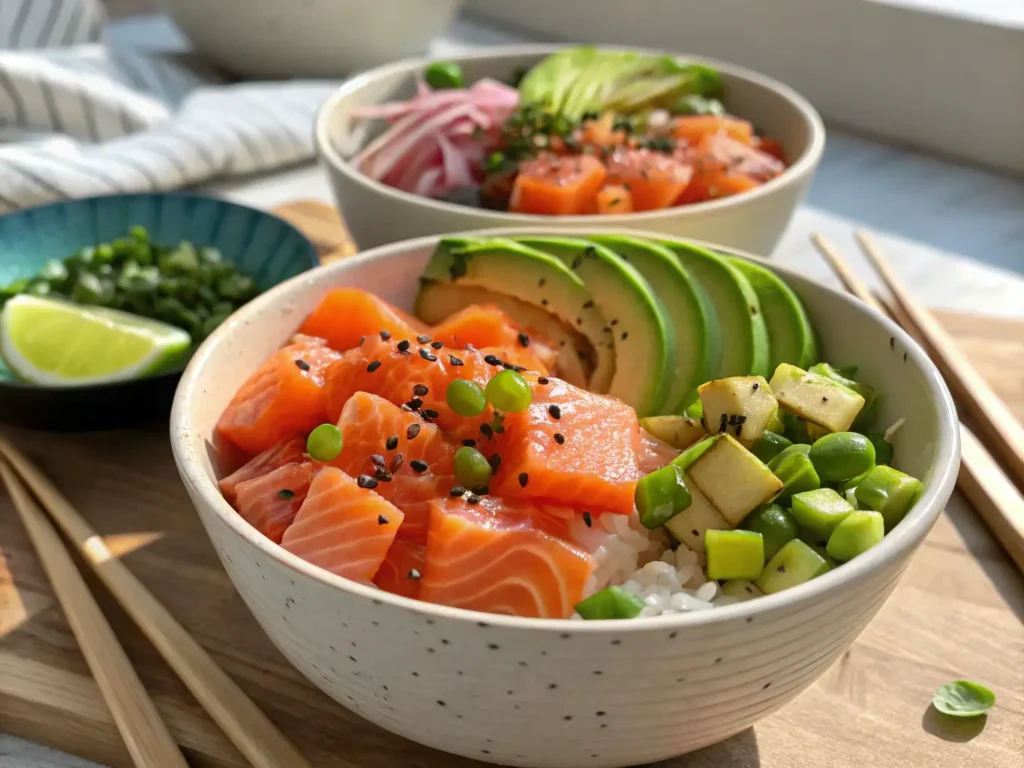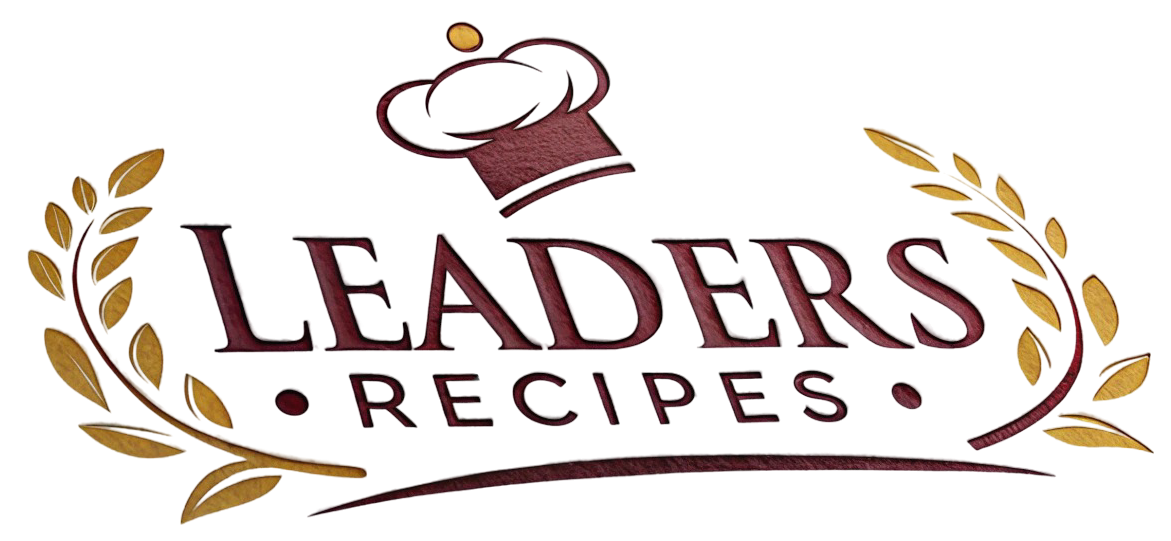Table of Contents
Salmon bowls have become increasingly popular due to their health benefits and delicious flavors. These bowls combine nutritious salmon with a variety of other ingredients, making them a perfect option for anyone looking for a balanced and flavorful meal. Not only are they tasty, but salmon bowls also offer endless customization options to suit your dietary preferences. They are quick and easy to prepare, which makes them ideal for both busy weeknights and meal prep. This guide will help you explore the essentials of salmon bowls, how to make them, and why they are such a great meal choice.
What Are Salmon Bowls?
A salmon bowl is a meal built around salmon, typically served with grains, vegetables, and sauces. This combination of ingredients is assembled in one bowl, creating a hearty and satisfying meal. What makes this dish so appealing is its ability to be tailored to your personal taste and dietary needs. The flexibility of the ingredients—ranging from the type of grain to the vegetables and sauces—makes it a versatile choice for every occasion. Whether you’re in need of a quick weeknight dinner or preparing meals for the week ahead, salmon bowls are an ideal option.
Salmon Bowls for Healthy Eating
These bowls provide a healthy, balanced meal that is both nutritious and enjoyable. Salmon, packed with omega-3 fatty acids, protein, and vitamins, supports heart health, brain function, and overall well-being. Pairing it with a variety of grains, vegetables, and healthy fats ensures a meal that provides long-lasting energy and keeps you full for longer. Furthermore, salmon bowls are easily customizable to accommodate different dietary needs, including keto, gluten-free, or low-carb diets, making them a flexible meal for anyone.
What is a Salmon Bowl?
A salmon bowl is a simple yet nourishing dish made with salmon as the primary protein, served over grains like rice or quinoa, and topped with fresh or roasted vegetables and sauces. The dish is built in layers, creating a balanced and filling meal. Moreover, you can experiment with different cooking methods for the salmon, such as baking, grilling, or pan-searing, depending on your preference. In addition, these bowls are incredibly versatile and easy to prepare, which is why they have become so popular among people who value both taste and nutrition.
Key Ingredients in a Salmon Bowl
When preparing a salmon bowl, the basic components include:
- Salmon – The main protein, often cooked by grilling, baking, or pan-searing.
- Grains – A base of white rice, brown rice, quinoa, or cauliflower rice.
- Vegetables – Fresh or roasted vegetables like spinach, avocado, roasted broccoli, or pickled cucumbers.
- Sauces – Flavorful additions like soy sauce, teriyaki, tahini, or spicy mayo.
These ingredients combine to create a well-rounded meal that is not only packed with flavor but also provides a balanced intake of protein, fiber, and healthy fats.
Why Salmon Bowls Are Popular
Salmon bowls have gained immense popularity because they offer a customizable and healthy meal option that can be adjusted to suit various tastes and dietary preferences. For example, they combine healthy fats from the salmon, fiber from the vegetables and grains, and protein from the salmon, making them a balanced and filling choice. Additionally, the flexibility of the dish allows for creativity, from spicy salmon bowls to Asian-inspired flavors. With so many variations available, it’s no wonder that salmon bowls have become a go-to meal for many people.

Cultural Variations of Salmon Bowls
Salmon bowls are enjoyed in various parts of the world, each culture adding its own twist to the dish. Some of the most popular variations include:
- Asian-Inspired Salmon Bowls: Featuring teriyaki salmon, edamame, and a soy-sesame dressing, these bowls offer a savory and slightly sweet flavor.
- Mediterranean Salmon Bowls: Incorporating tzatziki, hummus, feta cheese, and olives for a tangy and fresh taste.
- Hawaiian-Style Poke Bowls: These typically feature raw salmon, seaweed, and soy sauce, creating a light and refreshing dish that highlights the fresh flavors of the fish.
These variations show how adaptable salmon bowls can be, offering something for every palate and cultural preference.
Health Benefits of Salmon Bowls
Salmon bowls are a nutritious and balanced meal that provide a range of health benefits. By combining high-quality salmon with grains, vegetables, and healthy fats, you create a meal that promotes overall health while keeping you full and satisfied for longer periods.
Nutritional Value of Salmon
Salmon is renowned for its high levels of omega-3 fatty acids, which are essential for heart health and brain function. Additionally, salmon is an excellent source of protein, which helps with muscle repair and growth. It also provides important vitamins such as vitamin D, B vitamins, and selenium, all of which play key roles in maintaining a healthy immune system and energy levels.
Balanced Meal
What makes salmon bowls particularly appealing is that they provide a balanced meal. By combining protein from the salmon, fiber from the grains and vegetables, and healthy fats from ingredients like avocado or nuts, these bowls keep you full for longer and provide sustained energy. As a result, salmon bowls are ideal for people looking for a meal that is both filling and nutritious.
Customizing for Dietary Needs
One of the best features of salmon bowls is their ability to be customized to meet various dietary needs. For instance, you can:
- Keto: Replace grains with cauliflower rice or another low-carb option.
- Gluten-Free: Ensure that both the grains and sauces are free from gluten.
- Dairy-Free: Use tahini or coconut yogurt as alternatives to dairy-based sauces.
With so many options available, you can easily create a salmon bowl that fits your specific dietary preferences.
Ingredients for Salmon Bowls
The ingredients you choose for your salmon bowl play a significant role in the dish’s flavor and nutritional value. Here is a breakdown of the key ingredients you will need to make a delicious salmon bowl:
Choosing the Right Salmon
The quality of your salmon will directly affect the flavor of your dish. Wild-caught salmon is generally the best choice, as it contains higher levels of omega-3 fatty acids and has a firmer texture. However, if wild-caught salmon is unavailable, farmed salmon is an acceptable alternative. When selecting your salmon, make sure it is fresh, has a bright color, and smells clean, without any fishy odor.
Grain Base Options
The type of grain you use forms the base of your salmon bowl. Some popular options include:
- White rice: Soft and easy to prepare.
- Brown rice: Higher in fiber and more filling.
- Quinoa: A protein-packed, gluten-free option.
- Cauliflower rice: A low-carb alternative, perfect for keto diets.
Vegetables and Greens
Vegetables add not only flavor but also nutrients to your salmon bowl. Some great options include:
- Spinach: Fresh and nutrient-dense.
- Avocado: Adds creaminess and healthy fats.
- Roasted broccoli: Adds texture and flavor to the bowl.
- Pickled cucumbers: Provide a tangy crunch to balance the rich salmon.
Sauces and Dressings
The sauce you use will tie everything together and enhance the flavor of your bowl. Some common sauces include:
- Soy sauce or teriyaki sauce: For a savory, umami flavor.
- Tahini: For a creamy, nutty dressing.
- Lemon-dill yogurt sauce: A light, refreshing option.
- Sriracha mayo: For those who like a bit of spice.
Optional Toppings
For extra flavor and texture, you can top your salmon bowl with:
- Sesame seeds: For crunch and flavor.
- Chopped herbs: Fresh herbs like cilantro or parsley can brighten up the dish.
- Crispy onions: For an extra layer of crunch.
Step-by-Step Recipe for Salmon Bowls
Preparing the Salmon
- Preheat your oven to 375°F (190°C).
- Season the salmon fillets with olive oil, salt, pepper, and any other spices you prefer.
- Bake the salmon for 15-20 minutes, or until it flakes easily with a fork. Alternatively, you can grill or pan-sear the salmon if you prefer.
Cooking the Grain Base
- Cook your chosen grain according to the package instructions.
- For rice, bring water to a boil, reduce the heat, and simmer for 15-20 minutes, until the rice is tender.
Preparing the Vegetables
- Chop your vegetables into bite-sized pieces.
- For broccoli, roast at 400°F (200°C) for 15-20 minutes, or until it’s crispy and tender.
- Slice avocado and prepare fresh greens, such as spinach or arugula.
Assembling the Bowl
- Start with your chosen grain as the base in the bowl.
- Add the salmon fillet on top.
- Add the vegetables and drizzle your chosen sauce over the ingredients.
Adding Toppings
- Finish by adding optional toppings like sesame seeds, chopped herbs, or crispy onions for extra flavor.
Tips for Perfect Salmon Bowls
Balancing Flavors and Textures
To make a perfect salmon bowl, balance the flavors and textures. Combine savory, sweet, creamy, and crunchy elements to create a well-rounded and exciting meal.

Cooking Salmon to Perfection
Make sure to check the salmon after 12-15 minutes of cooking to avoid overcooking. The salmon should be flaky but moist, with a tender texture.
Meal Prep Tips
If you’re making salmon bowls for meal prep, store each component in separate containers. This helps the ingredients stay fresh and can be assembled when you’re ready to eat.
Popular Variations of Salmon Bowls
Asian-Inspired Salmon Bowl
Marinate the salmon in teriyaki sauce and serve with edamame, pickled cucumbers, and a drizzle of soy sauce for an Asian twist.
Mediterranean Salmon Bowl
Incorporate tzatziki, hummus, feta cheese, and olives for a Mediterranean-inspired flavor.
Hawaiian-Style Salmon Poke Bowl
Use raw salmon or seared salmon, and top with soy sauce, seaweed, and fresh vegetables.
Spicy Salmon Bowl
For a bit of heat, add sriracha mayo, chili flakes, or spicy mustard.
Serving Suggestions for Salmon Bowls
Side Dishes
Serve your salmon bowl with side dishes like miso soup, garlic bread, or a fruit salad.
Beverage Pairings
Serve your salmon bowl with refreshing beverages like green tea, white wine, or sparkling water.
Garnishes for Presentation
Add a beautiful touch with microgreens, lemon slices, or edible flowers to enhance the visual appeal of your bowl.
Common Mistakes to Avoid
Overcooking the Salmon
To prevent dry salmon, check it after 12-15 minutes of cooking to ensure it remains moist and flaky.
Unbalanced Bowl Composition
Make sure to balance the grains, protein, and vegetables in your bowl to achieve a satisfying meal.
Not Using Fresh Ingredients
Use fresh ingredients to maximize the flavor and nutritional benefits of your salmon bowl.
FAQs
Can I use canned salmon instead of fresh?
Yes, canned salmon can be used in place of fresh, but fresh will provide the best flavor and texture.
How do I store leftovers?
Store each component of the bowl separately in airtight containers for up to three days.
What are good vegetarian substitutes for salmon?
Try using tofu, tempeh, or chickpeas for a vegetarian version.
Can I freeze salmon bowls?
It’s best to freeze the salmon separately. The vegetables and grains can be frozen, but sauces may not freeze well.
How do I make this recipe gluten-free?
Use gluten-free grains and ensure the sauces are free of gluten.
Can I prepare salmon bowls for meal prep?
Yes, salmon bowls are great for meal prep. Store the components separately and assemble when ready to eat.
Conclusion
Salmon bowls are a perfect meal for anyone looking to enjoy a nutritious, flavorful, and customizable dish. With the flexibility to experiment with different grains, vegetables, and sauces, you can easily create your ideal salmon bowl. Whether you’re making a quick weeknight dinner or preparing for the week ahead, salmon bowls offer a healthy and satisfying option that suits a variety of tastes and dietary needs.

